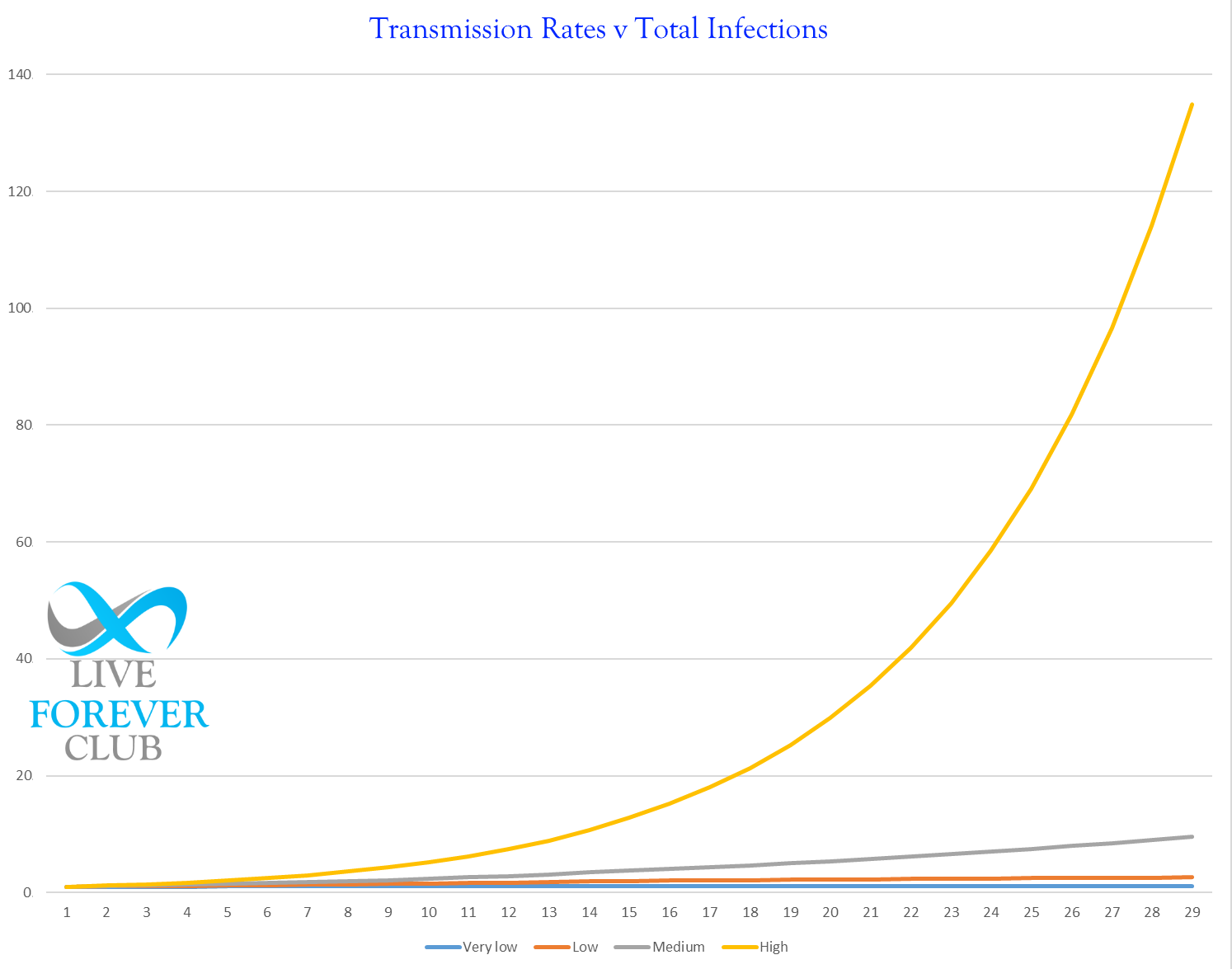General Election 2024 Longevity Policies
What are the main political parties offering longevity enthusiasts in this year’s UK general election?
Join the club for FREE to access the whole archive and other member benefits.
Why is the government considering drastic measures to contain COVID-19, better known as coronavirus? Realistically, containment has already failed, all it can do now is slow the spread so that our hospitals and healthcare workers aren’t overwhelmed.
With the main advice still being just to wash your hands more, what difference can that really make?
I put a very simple model together in a spreadsheet – available in the link below. It assumes that one person (let’s call them “you”!) gets infected, and then looks at how quickly you might pass on the infection. I’ll assume you’re a conscientious citizen, but are one of the majority than only suffers mild or no symptoms (i.e. asymptomatic) so don’t realise you might be infectious.
I started with a finger-in-the-air assumption that in normal life (going to work, school, socialising, etc) there is a 10% chance of you infecting someone each day, and once someone else is infected they behave in the same way as you with the same chance of transmitting the virus. I also took into account that you (along with anyone you spread coronavirus to) is infectious for 14 days.
28 days later you have infected a total of 9 other people. I’m calling this the medium scenario.

So, what happens if as a precautionary measure you were to take minor steps – not realising you were infected you may do this to protect yourself? Let’s assume you half the daily risk of transmitting the disease, down to a 5% risk.
This “low” scenario results in you infecting only 2 other people in the same 28-day period.
But, what if you’re reckless, and up your socialising and travel and disregard advice to wash your hands and use sanitiser? Instead of halving your transmission risk, you double it?
28 days later, in the “high” scenario, you have infected 134 other people. That’s over 60 times as many as the low scenario. The 4x difference in transmission rate (5% for low, 20% for high scenario) results in in a 60x difference in the number of people infected.
Now it becomes a little more clear why the government is trying to nudge the population to take sensible precautions, as a little effort really can go a long way. If everyone were to self-isolate, maybe reducing daily transmission rates down to 1% (“very low” scenario) the total number of people infected barely gets off the starting block.
You can see in the graph that the high scenario line does really start heading skywards. This is partly because my simple pandemic model doesn’t take into account that the transmission rate will reduce over time as there are less people available, who have not yet been infected, to pass it on to.

If you want to play with the figures – download the spreadsheet here: ![]()
Or click on the table to zoom in.
Impli Implantables Presents at London Futurists
Coronavirus Deaths UK Tracker
What are the main political parties offering longevity enthusiasts in this year’s UK general election?
Comparison of UK mail and clinic tests, plus a review of the Medichecks test
Do you know the difference between sensitivity and specificity?
Interesting thoughts from an international panel of futurists
Tracking UK COVID-19 deaths to see when the peak is passed